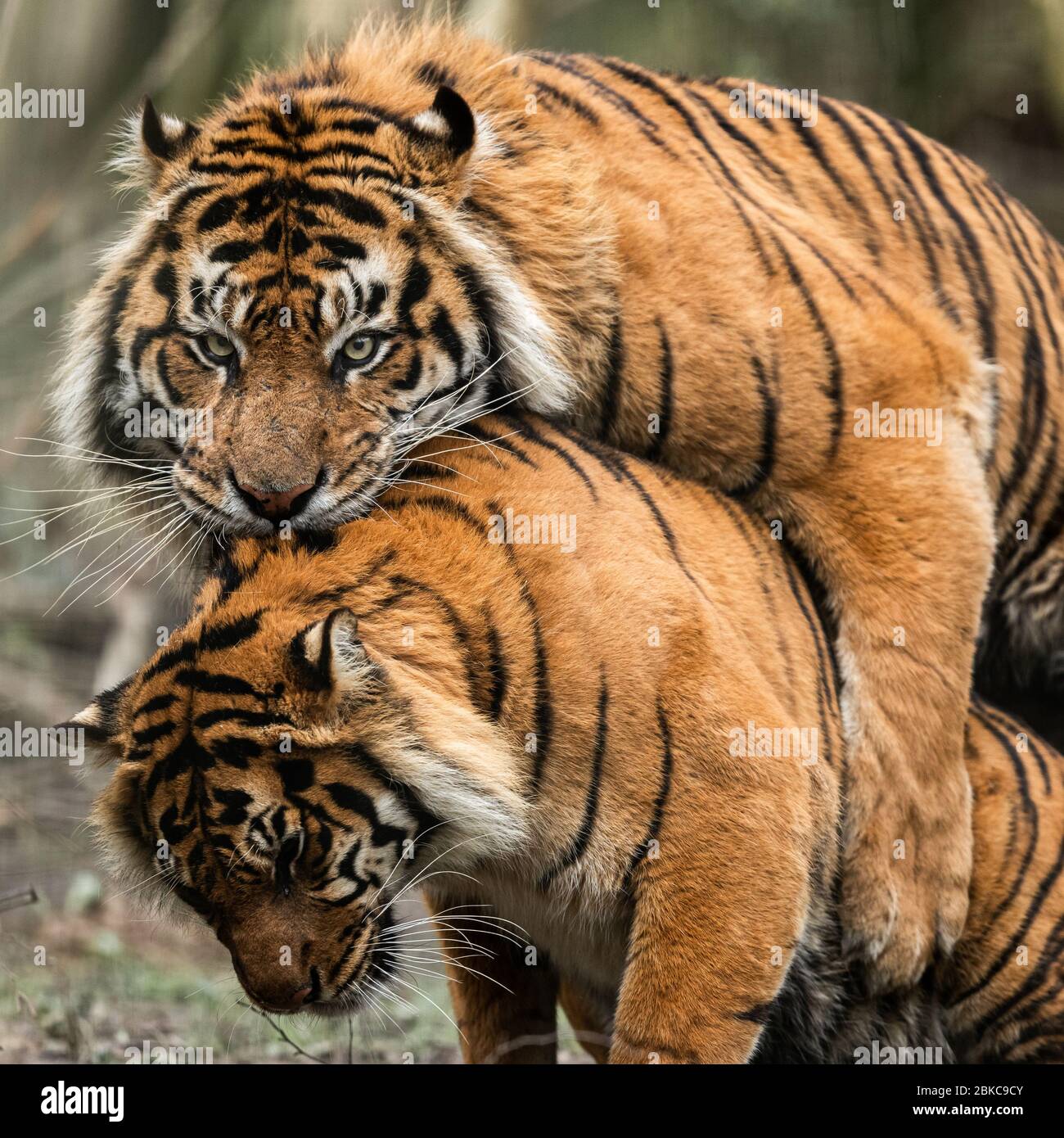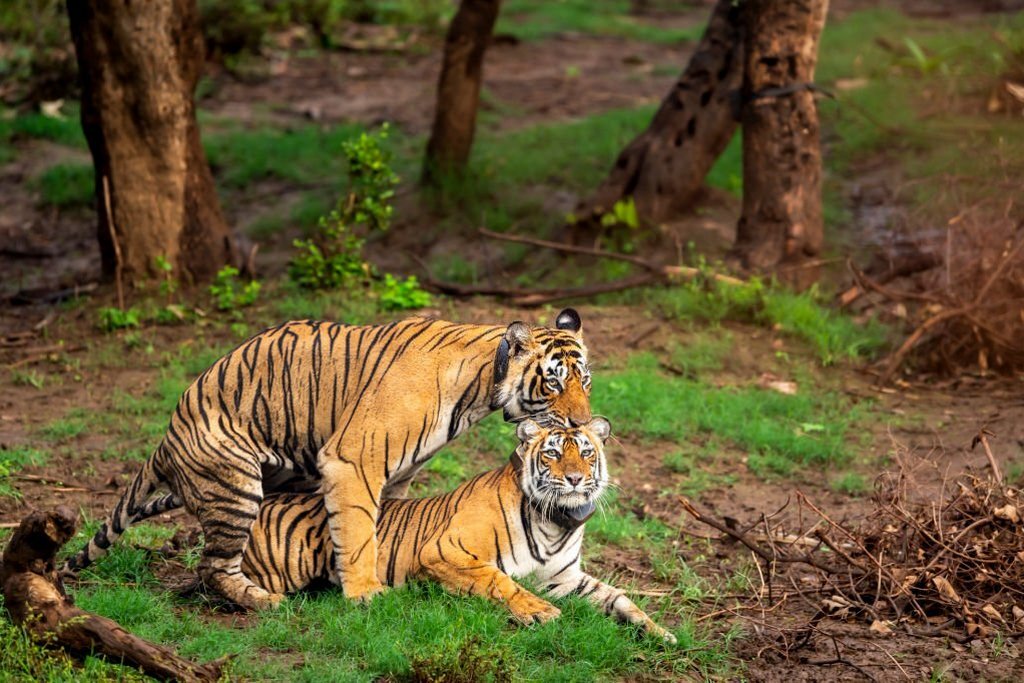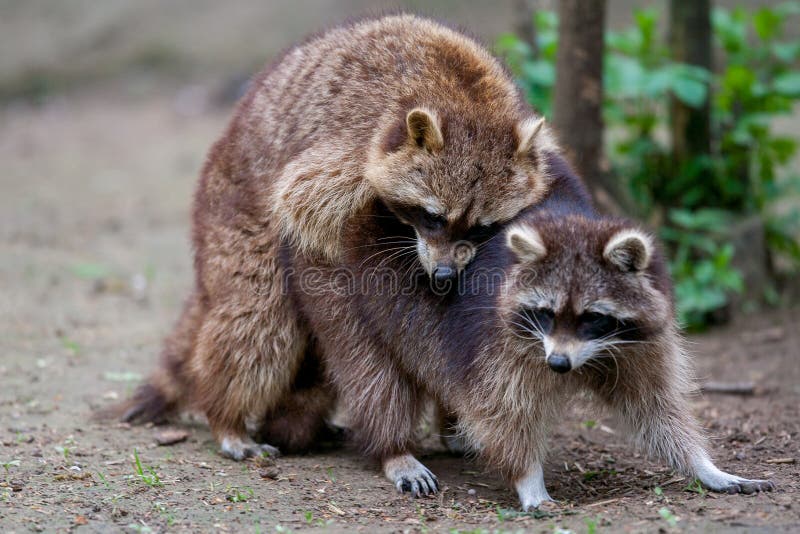Horse Mating: Unveiling The Art Of Equine Reproduction
Step into the incredible world of horse breeding and witness nature at its finest. The process of mating horses is not merely a biological act but a fascinating interplay of instinct, communication, and meticulous management, crucial for the continuation and improvement of equine lineages. It's a journey that begins long before the physical act, encompassing complex biological cycles, intricate courtship rituals, and dedicated care, ultimately leading to the conception of a new life.
Understanding the nuances of horse reproduction, whether in the wild or under human management, is essential for anyone involved in breeding, from seasoned professionals to curious enthusiasts. This comprehensive guide will dive into the rituals, processes, and behaviors involved in equine reproduction, offering insights into how to optimize breeding success while prioritizing horse welfare. We will explore everything from the initial courtship ritual to the successful conception of a foal, ensuring you gain a detailed understanding of this vital aspect of equine life.
Table of Contents
- Understanding the Basics: What is Horse Mating?
- The Mare's Reproductive Cycle: Timing is Everything
- The Courtship Ritual: A Dance of Instincts and Communication
- The Act of Covering: Mounting and Copulation
- Natural Pasture Mating vs. Human Management
- Artificial Insemination: Optimizing Breeding Success
- Post-Mating Care and Pregnancy: Nurturing New Life
- Challenges and Solutions in Equine Reproduction
Understanding the Basics: What is Horse Mating?
Horse mating, often referred to as horse breeding, is the fundamental process by which horses reproduce. Like most mammals, horses reproduce sexually, involving the coming together of a male horse (stallion) and a female horse (mare) for breeding. This fascinating process is an essential part of horse breeding, whether for perpetuating a specific bloodline, improving genetic traits, or simply continuing the species. It involves a detailed understanding of the behaviors and communication of the horses involved, as well as the physical act of copulation itself. The entire journey, from the initial courtship to the conception of a foal, is a testament to nature's design, requiring a blend of instinct, timing, and often, human expertise to ensure successful outcomes.
- 18 If%C5%9Fa Sotwe
- Elon Musk Baby Fur
- Martasalessales Age
- Iran Population Mid 2025 Estimate
- Giantess Portals
The Mare's Reproductive Cycle: Timing is Everything
Central to the success of horse mating is a thorough understanding of the mare's oestrous cycle, often referred to as her "heat" cycle. Similar to a menstrual cycle in humans, this period is when the mare becomes receptive to mating. Most horses have a seasonal breeding cycle, typically going into heat for the first time of the season in early spring and ending in late summer, largely influenced by increasing daylight hours. This photoperiodic response ensures that foals are born in spring when environmental conditions are most favorable for their survival and growth. A mare's oestrous cycle typically lasts around 21-22 days, with the period of estrus (receptivity to the stallion) lasting approximately 5-7 days. Ovulation, the release of the egg, usually occurs 24-48 hours before the end of estrus. Pinpointing this window is critical for successful breeding, as it dictates the optimal time for the stallion to cover the mare. Observing behavioral changes, such as "winking" (everting the clitoris), squatting, urinating frequently, and a relaxed tail, are key indicators that a mare is in heat and ready for the intricate dance of horse mating.
The Courtship Ritual: A Dance of Instincts and Communication
Before the physical act of mating, horses engage in a natural courtship process involving instincts, timing, and playful horseplay. This ritual is a crucial preliminary step, allowing the mare and stallion to assess each other and for the mare to signal her receptivity. Discovering the process from courtship rituals and signals to the actual mating act, whether in the wild or under human management, reveals the depth of equine communication. It involves a detailed understanding of the behaviors and communication of the horses involved, setting the stage for successful breeding. Understanding the natural mating behavior of horses, including courtship, stallion behavior, and mare behavior, is paramount for anyone involved in breeding programs, as it helps in identifying optimal breeding times and ensuring the safety and comfort of both animals.
Stallion Behavior: The Suitor's Role
A stallion's role in courtship is often characterized by a display of dominance and interest. When introduced to a mare, especially one in estrus, a stallion will typically exhibit a range of behaviors designed to test her receptivity and assert his presence. This includes sniffing her urine and feces, often followed by a flehmen response (curling the upper lip back to expose the vomeronasal organ, which helps detect pheromones). He may nuzzle her flank, neck, and hindquarters, often nipping gently. Stallions will also vocalize, with soft nickers or louder roars, and may paw the ground or prance. These actions are part of his assessment of the mare's readiness and an invitation for her to accept his advances. A persistent, yet respectful, approach from the stallion is key to encouraging the mare to become receptive, highlighting the intricate social dynamics involved in horse mating.
- Redgifs Similar
- Leonardo Dicaprio Water Gun
- Naked Priyanka Chopra
- Lucy Hale Height
- Population Of Sunni In Iran
Mare Behavior: Signals of Receptivity
The mare's behavior during courtship is equally, if not more, important, as she ultimately dictates whether mating will occur. A mare in estrus will exhibit distinct signs of receptivity. These include "winking," where she rhythmically everts her clitoris, often accompanied by frequent urination, sometimes passing small amounts of urine with a strong odor to attract the stallion. She may squat, elevate her tail, and lean into the stallion's nuzzles and bites, indicating acceptance. Some mares may even seek out the stallion, actively approaching him and presenting their hindquarters. Conversely, a mare not in heat will display aggressive or defensive behaviors, such as kicking, biting, squealing, or flattening her ears, clearly indicating her unwillingness to mate. Recognizing these subtle and overt signals is crucial for successful breeding, as it prevents unnecessary stress or injury to either animal and ensures that the timing for horse mating is optimal.
The Act of Covering: Mounting and Copulation
Once the courtship rituals have established the mare's receptivity, the actual physical act of horse mating, known as "covering," takes place. This involves the stallion mounting the mare and ejaculating semen into her reproductive tract. The process is swift and instinctive, but it requires precise timing and coordination. The stallion will approach the mare from behind, often resting his chin on her rump as a final check of her willingness. If she stands firm and receptive, he will mount, placing his forelegs over her back and his hind legs firmly on the ground. During copulation, the stallion's penis enters the mare's vagina, and ejaculation typically occurs rapidly, often marked by a "flagging" motion of the stallion's tail. The entire act of copulation usually lasts only a few seconds to a minute. Ensuring successful breeding requires not only the correct timing of the mare's estrus but also a calm and controlled environment, especially in managed breeding scenarios, to facilitate this crucial stage of horse reproduction.
Natural Pasture Mating vs. Human Management
The mating process for horses can occur through various methods, broadly categorized into natural pasture breeding and human-managed breeding. Horse mating in the wild and natural pasture mating is characterized by three distinct phases: courtship, mounting, and dismounting. In these natural settings, the stallion often lives with a herd of mares, allowing for continuous assessment of their reproductive status and spontaneous breeding when a mare comes into estrus. Under human management, the process is more controlled, often involving bringing the mare and stallion together only when the mare is confirmed to be in heat. Discovering the process from courtship rituals and signals to the actual mating act, whether in the wild or under human management, highlights the adaptability of equine reproduction. Learning how to prepare for natural mating, manage common challenges, and explore alternative methods is vital for breeders aiming for optimal outcomes and horse welfare.
Advantages and Disadvantages of Natural Breeding
Natural pasture breeding, where a stallion is turned out with a group of mares, offers several advantages. It is often less labor-intensive for humans, as the horses manage the timing and act of mating themselves, relying on their innate instincts. This method can also be less stressful for the horses, as it mimics their natural social structures and reproductive behaviors. Furthermore, it can lead to higher conception rates in some cases due to repeated breedings during the mare's estrus period. However, natural breeding also comes with significant disadvantages. There is a higher risk of injury to both the mare and stallion, especially if one is not fully receptive or if the stallion is overly aggressive. It also makes it difficult to accurately determine the exact breeding date, which is crucial for predicting foaling dates and managing pregnancy. Disease transmission is another concern, as there's no control over the hygiene of the mating process. Finally, it limits the number of mares a valuable stallion can cover in a season, as he is physically present with only one group.
Controlled Breeding: Ensuring Success and Safety
Under human management, breeding is typically more controlled, aiming to ensure success and safety while optimizing the use of valuable genetics. This approach involves carefully monitoring the mare's estrous cycle through palpation, ultrasonography, and behavioral observation to pinpoint the optimal breeding window. When the mare is receptive, she is brought to the stallion in a controlled environment, such as a breeding shed or designated area. This allows for close supervision, reducing the risk of injury to both animals. Hand breeding, where handlers assist the stallion in mounting and guide him, is a common controlled method. This meticulous approach allows for accurate breeding records, crucial for predicting foaling dates and managing the mare's pregnancy. Controlled breeding also facilitates better disease prevention through pre-breeding health checks and hygiene protocols. While more labor-intensive, controlled breeding offers greater precision, safety, and efficiency, making it the preferred method for many professional breeders focused on the successful outcome of horse mating.
Artificial Insemination: Optimizing Breeding Success
Beyond natural covering, artificial insemination (AI) has revolutionized horse breeding, offering significant advantages for optimizing breeding success and promoting horse welfare. The mating process for horses, whether through natural breeding or artificial insemination, is a crucial aspect of domestic horse breeding, requiring expertise from equine experts and careful consideration of selective breeding and the reproductive system. AI involves the collection of semen from a stallion and its direct introduction into the mare's reproductive tract, bypassing the physical act of natural covering. This technique allows for the breeding of mares to stallions located across continents, expands the number of mares a single stallion can breed in a season, and reduces the risk of injury or disease transmission between animals. Semen can be used fresh, cooled, or frozen, providing flexibility in breeding schedules. AI also enables the use of stallions with physical limitations or behavioral issues that might prevent natural breeding. While requiring specialized equipment and veterinary expertise, AI is a powerful tool for genetic improvement, allowing breeders to make informed decisions about selective breeding and to access a wider pool of genetics, thereby enhancing the overall quality and health of future generations of horses.
Post-Mating Care and Pregnancy: Nurturing New Life
The journey of horse mating doesn't end with copulation; it transitions into the critical phase of post-mating care and pregnancy management. After breeding, whether naturally or via AI, the focus shifts to confirming pregnancy and providing optimal care for the mare to ensure the healthy development of the foal. Find out the factors affecting breeding success, the care for the mare and foal, and the stallion management that contribute to a successful outcome. Early pregnancy diagnosis, typically via ultrasound around 14-16 days post-breeding, is crucial for managing the mare and planning for the future. The duration of gestation in horses is approximately 340 days, though it can vary. During this period, the mare requires specialized nutritional support, regular veterinary check-ups, and a calm, safe environment. Learning about the signs of pregnancy, duration of gestation, and care during this period is vital. This includes ensuring she receives adequate vitamins, minerals, and protein, especially in the latter stages of pregnancy when fetal growth is rapid. Proper exercise, parasite control, and vaccination protocols are also essential for both mare and developing foal. Preparing for the foaling process is the final step, involving setting up a clean, safe foaling stall and being aware of the signs of impending labor. This comprehensive care ensures the mare remains healthy and the foal has the best possible start in life, underscoring the long-term commitment involved in successful horse mating and breeding.
Challenges and Solutions in Equine Reproduction
Despite careful planning, horse mating and breeding can present various challenges, from infertility issues to complications during pregnancy or foaling. Find out the factors affecting breeding success, which often include mare or stallion fertility problems, improper timing of breeding, or environmental stressors. Infertility in mares can stem from issues like persistent uterine infections, hormonal imbalances, or anatomical abnormalities. For stallions, low sperm count, poor sperm motility, or physical injuries can impede breeding success. Preparing for the foaling process and finding solutions to breeding challenges and infertility issues requires a proactive and informed approach. Veterinary expertise is paramount in diagnosing and addressing these problems. Solutions might include hormone therapies, uterine lavages, advanced reproductive technologies like embryo transfer, or specialized nutritional management. Managing common challenges also involves careful stallion management, ensuring his health, libido, and semen quality are maintained. Environmental factors, such as extreme heat or cold, and stress can also impact fertility and breeding success, necessitating appropriate management strategies. Continuous monitoring, accurate record-keeping, and a willingness to consult with equine reproductive specialists are key to overcoming obstacles and ensuring the long-term success and sustainability of any horse breeding program, ultimately contributing to the healthy continuation of equine bloodlines.
The world of horse mating is truly incredible, a blend of ancient instincts and modern science. From the subtle cues of courtship to the intricate processes of reproduction and gestation, every stage demands attention, expertise, and a deep respect for these magnificent animals. By understanding the biological and behavioral aspects of horse mating, breeders can optimize their success, promote horse welfare, and contribute to the vibrant future of equine populations. Whether you're a seasoned breeder or simply fascinated by horses, the journey of equine reproduction offers endless learning and appreciation.
We hope this comprehensive guide has shed light on the complex yet rewarding process of horse mating. Do you have experiences with horse breeding, or perhaps questions about specific aspects? Share your thoughts in the comments below! If you found this article insightful, consider sharing it with fellow equine enthusiasts, and explore our other articles for more in-depth knowledge on horse care and management.
- Aishah Sofey Pics
- Beau Marie St Clair
- Where Does Belle Delphine Live
- How To Bypass Deviantart Subscription
- Godlike Productions New Threads

mating of two tigers in the forest Stock Photo - Alamy

Bengal Tiger Mating Behavior and Cub Rearing

Two Raccoons Procyon Lotor Mating Stock Photo - Image of mating, alert